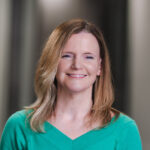When Rupert Bedell first got the call about the CEO role at Fasthosts, he was convinced it had been a mistake. A German company in the tech space was looking for a CEO… and they were calling him? A marketer? No tech background, and his German extended to ordering a drink and not much else.
But behind the initial surprise, something important was going on, something bigger than one career twist. Rupert’s appointment wasn’t just a personal shift. It was a small signal that perceptions around the CMO to CEO journey might be starting to change.
Rupert sat down with Sam Curran, Associate Partner within the Commercial, Sales & Marketing practice at Eton Bridge Partners, to reflect on the CMO-to-CEO journey, sharing candid lessons and advice for aspiring leaders. This conversation resulted in part reflection, part reality check, and part quiet challenge to the assumptions many still hold about who gets a CEO seat.
The transition from Chief Marketing Officer (CMO) to Chief Executive Officer (CEO) is relatively uncommon. According to McKinsey, only 4% of Fortune 250 CEOs come from a marketing background. Compare that to the long-established CFO pipeline or even Chief Legal Officers, and it’s a stark contrast. And yet, many of the qualities now seen as crucial for senior leadership, like commercial clarity, customer insight, storytelling, and agility, are second nature to marketers who’ve spent years driving both performance and perception. Perhaps the tide is beginning to turn; 37% of Fortune 500 CEOs have some functional experience in marketing. Maybe the shift is already happening, just more quietly than anyone expected.
An unscripted path that became a strong foundation for leadership
Rupert’s own journey didn’t follow a rigid plan. Born in Ireland, he studied engineering and moved to the UK in the mid-90s to join the Barclays graduate scheme. From there he fell into marketing, and stayed. Moving between major financial institutions and smaller businesses where he could take on broader remits.
That mix gave him something that many leaders lack – variety. In large organisations, he learned how to navigate complexity, meanwhile, in smaller firms, he was the CMO, the brand voice, and the go-to decision-maker. It meant he often had full responsibility for everything from strategy to execution, and while he didn’t always realise it at the time, that balancing act was setting him up for something bigger.
Still, becoming a CEO hadn’t been on the radar. When the Fasthosts opportunity came through, Rupert was actively looking for CMO roles. The email about the CEO position was a surprise. “Cloud hosting? German parent company? CEO role? I genuinely thought someone had misread my CV.”
But the more he spoke with the hiring team, the more it made sense. What they really wanted was deep UK market knowledge and B2B marketing expertise. “Suddenly,” he said, “I wasn’t as far off as I thought.”
The power of listening before leading
Once the offer came in and he accepted, the scale of the challenge hit. Fasthosts was an established business that was nearing its third decade. Many of the team had been with the company from the early days, and Rupert, new to the industry, new to tech, and very much an outsider, was about to take the helm.
He made a conscious choice not to rush in with answers. Instead, he started with questions. Lots of them. “I didn’t want to assume anything,” he said. “I wasn’t there to fix or change things immediately. I needed to understand the culture, the history, what people cared about.”
That early listening period paid off. Staff engagement surveys, casual conversations, and just being present helped him build credibility without pretending to be something he wasn’t. This aligns with the thoughtful, authentic leadership Eton Bridge Partners champions, grounded in empathy, respect, and putting people at the heart of business.
He gave himself a simple structure to keep from getting overwhelmed: a four-box model stuck on the wall above his desk. Each box represented one key area to focus on:
- P&L (Profit & Loss) performance – the non-negotiable. The core responsibility.
- NPS (Net Promoter Score) – a gauge of customer experience.
- Brand clarity – which, when he arrived, didn’t really exist.
- People and morale – an area in flux after the long-serving previous CEO stepped down.
Those final two boxes, brand and morale, became his biggest focus. The P&L was steady, and the NPS was fine. However, the business lacked a clear identity, and staff were feeling uncertain.
That’s where Rupert put his energy. Not by launching a rebrand or overhauling internal comms, but by listening and setting a tone of openness. “Sometimes, the most impactful thing you can do is stay silent to show people that you’re really listening. That you’re going to take their views seriously.”
Industry curveballs and price sensitivity
The leap from financial services to cloud hosting came with a few surprises. One of the biggest issues is how fast everything moves and how sensitive customers are to price.
“In banking, customers are loyal almost to a fault,” he explained. “People stay with their bank even if it’s terrible. Here, if we change our pricing by a small amount, we might lose half our customer base.”
That price elasticity was a shock, as was the speed of change in the sector. But it pushed him to think differently, to look more closely at competitors He was then able to get a deeper understanding of what customers actually need,. and bring a much sharper edge to his commercial decisions than he had as a marketer.
Still, the biggest shift wasn’t technical. It was cultural. The CEO role required tone-setting as much as decision-making, and Rupert had to figure out how to lead a tight-knit team without disrupting the culture they’d spent years building.
The CMO debate: Too narrow, or just misunderstood?
When Sam asked Rupert what he thinks about the current landscape of the CMO role, he paused. “It’s changed a lot,” he said. “Some of the responsibilities that used to sit under marketing, pricing, product, even customer insights, have been pulled away in recent years.”
That narrowing of scope has made it harder, in his view, for CMOs to be seen as commercially credible. “You’re still expected to deliver results, but now you’ve got less control over the levers.”
He also points out how unreasonable the weight of responsibility in the role had become. “You were supposed to be the creative lead, brand guardian, martech owner, performance driver, and customer expert, all at once. It wasn’t sustainable.”
But while formal control may have shrunk, Rupert believes the opportunity for influence is still there. Strong CMOs, he argues, are still at the table, even if they’re not signing off on product specs or pricing changes directly.
“If you’re aiming to become a CEO, don’t obsess over the parts of the org chart you don’t own. Show that you understand them. That you can speak about them with depth and clarity.”
That’s what boards look for, he believes. Not technical mastery, but breadth. Confidence. An ability to join the dots and think across silos. It’s a mindset shift many senior marketers are navigating, and one that we at Eton Bridge Partners supports other senior leaders with every day.
Leading with strengths: Start where you’re strong
Looking back, Rupert is clear-eyed about his own gaps in experience. He didn’t try to bluff his way through interviews or pretend he had all the answers. Instead, he leaned into what he did bring, meaning deep customer knowledge, commercial instinct, and a strong read on people.
“I said from the start that I’m not the finished article. But I’m someone who learns fast. Someone who’s shown I can close gaps quickly. That’s what got me over the line.”
It’s a mindset he encourages other CMOs to adopt. Don’t wait until you feel ready – you probably won’t – and don’t panic if your CV doesn’t fit the traditional CEO mould.
“Focus on what you’ve done, show where you’ve had impact, and be honest about the journey you’re still on.”
Because once you step into the CEO seat, you’re not expected to know everything. You’re expected to build the right team, ask the right questions, and steer with clarity, even when the path ahead isn’t fully mapped out.
For Rupert, that’s been the most freeing part. Letting go of needing to be across every single campaign, every number. “Now I can actually step back and think. I can look across the business and ask the bigger questions. That’s where I add value now.”
And would he recommend it? The leap? The pressure? The exposure?
“Without question. It’s energising. It stretches you. And for marketers especially, it might be closer than you think.”
If Rupert’s journey resonates with you, or if you’re a marketing leader wondering what it might take to make the leap into broader leadership, we’d love to hear from you.
At Eton Bridge Partners, we work closely with businesses and leaders to find the right fit, bringing together business insight, commercial edge, and leadership potential. Whether you’re considering your next career step or looking for transformative leadership teams, please get in touch.
References:
Related articles
Keep in touch
We’d love to stay in touch, please register to receive topical insights and exclusive event invitations.
Subscribe to our mailing list






